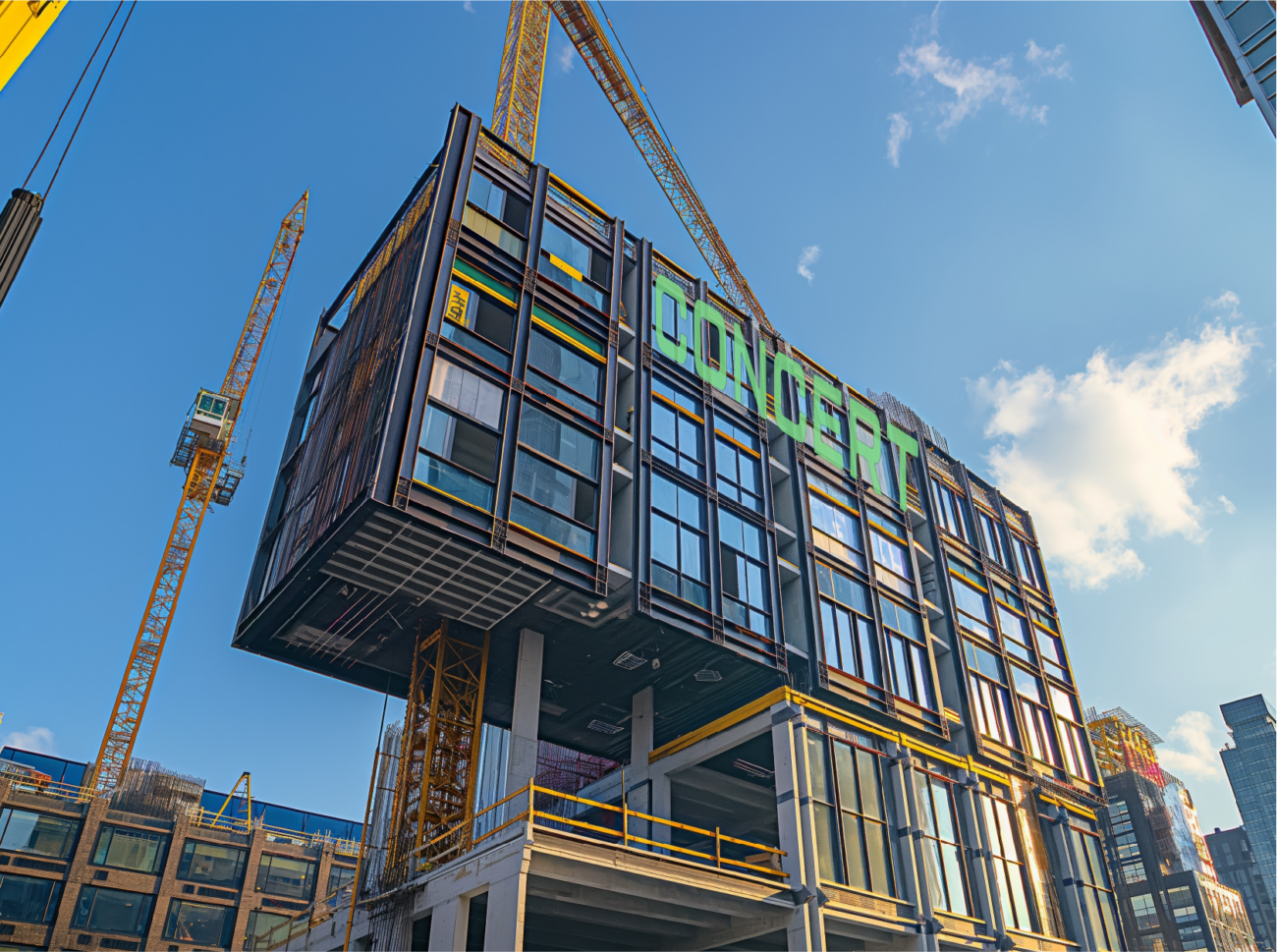By Zach Gentry
Concert CEO
Virtual design & construction is centered on the idea that the physical world can be synthesized, evaluated, and simulated on a computer. This idea has been around since the origin of computers but has picked up momentum now that contractors and permitting authorities can improve their speed and accuracy through model-based review and analysis.
Building Information Modeling (BIM) is also the native language of architects. Through BIM and now through immersive AR/VR, designers can tell a compelling story about a future place long before it is built.
In theory, the model created by the architect and approved by the owner should be the basis of all models used by the contractor to establish their supply chain and work schedule. While the purposes of the architect’s and contractor’s models are different, the core geometries and systems are the same. In a perfect world, the model would be the same. In the real world, they seldom are.
The more common path is that the architect designs in three dimensions but then deprecates the model into two-dimensional sheets, which can either be printed or saved as PDFs. If a picture is worth a thousand words, it is fair to say that it takes a thousand words to make up for the loss of information and fidelity. These words get crammed into the margins of the plan sets, which then require a cycle of questions and responses between architects and contractors. This can add weeks to the process and increases the odds of miscommunication.
In most current practices, the contractor will use these two-dimensional sets to recreate a 3D model, which adds another unnecessary cost and potential failure point. increasingly, the architect might supply their model or a version of it but only under an indemnification letter stating that the drawings remain the first source documents for reliance.
We call this design & construction shortfall the “model gap.” We are going to take a brief look at the gap and explore some solutions. Closing the gap will improve project speed, can reduce construction cost, and should reduce risk.
In our opinion, the gap exists for four main reasons that are all interconnected:
- Legal/Contractual
- Intellectual Property Rights
- Model Management
- Model Accuracy
Legal/Contractual
The AIA has long been a leader in developing contracts that facilitate good relations between architects and their counterparties. The formal agreements between architects and owners establish an “instrument of service” which is the graphical expression of the building to be built. Currently, the AIA has not produced a standard contract to have model-based instruments of service. We understand that this issue is being addressed by the Contract Documents subcommittee and are excited to see this objection transitioning.
Intellectual Property Rights
Unlike plan sheets, a model is very portable and inherently useful. With a well-developed model, a good contractor or developer could essentially rebuild a project even if they did not have the blessing of the architect who designed it. This doesn’t happen often, but we do know of an international amusement park that is an exact replica of something that had been shared for a different project. This is one of the problems that CONCERT was created to solve. Just as people now feel comfortable creating, buying, and selling digital art as NFTs, so we use the blockchain to confer ownership and create a digital medium through which people share project data. This also enables us to cleanly, clearly authorize the modes of possession and create transfers of possession as is needed and mandated by the project.
Model Management
Another connected concern is that unlike a printed (digitally or otherwise) drawing, a model can easily be manipulated without its author knowing it. Contractors need to have unfettered access to the models to be able to accomplish their work, but if a modification is made that affects the design intent to which the owner agreed, or the change imparts new liability to the design team, this is a big issue. What CONCERT does is create digital fingerprints for the model and any supporting documentation. If a file has been changed, it is no longer authorized, which may also mean it is no longer under the aegis of the building permit as well. These kinds of issues happen all the time, particularly in a world of supply chain vulnerabilities, labor shortages, and construction automation. By fingerprinting files, we ensure that all parties operate in unison on a construction project.
Model Accuracy
Even if through the good work of AIA Contract Documents and CONCERT, we can clear the major structural hurdles, there is still one final issue to address –the level of accuracy an architect uses to create their model and the level of specificity that the contractor needs will differ. That should be expected. An architect does not need to and should not assume the means and methods that the contractor uses to construct the building. However, ensuring a standard level of development and naming conventions at the outset of the project would go a long way to ensuring a high-fidelity handover. The corresponding cost delta would create a slightly higher level of fees in the design phase but would be met with a noticeable reduction in costs in early construction review.
In summary, the model gap exists due to solvable trust and transparency issues. Architectural practices that embrace the change will save their customers time and money but more importantly will be leading in their practice toward a digital future.





